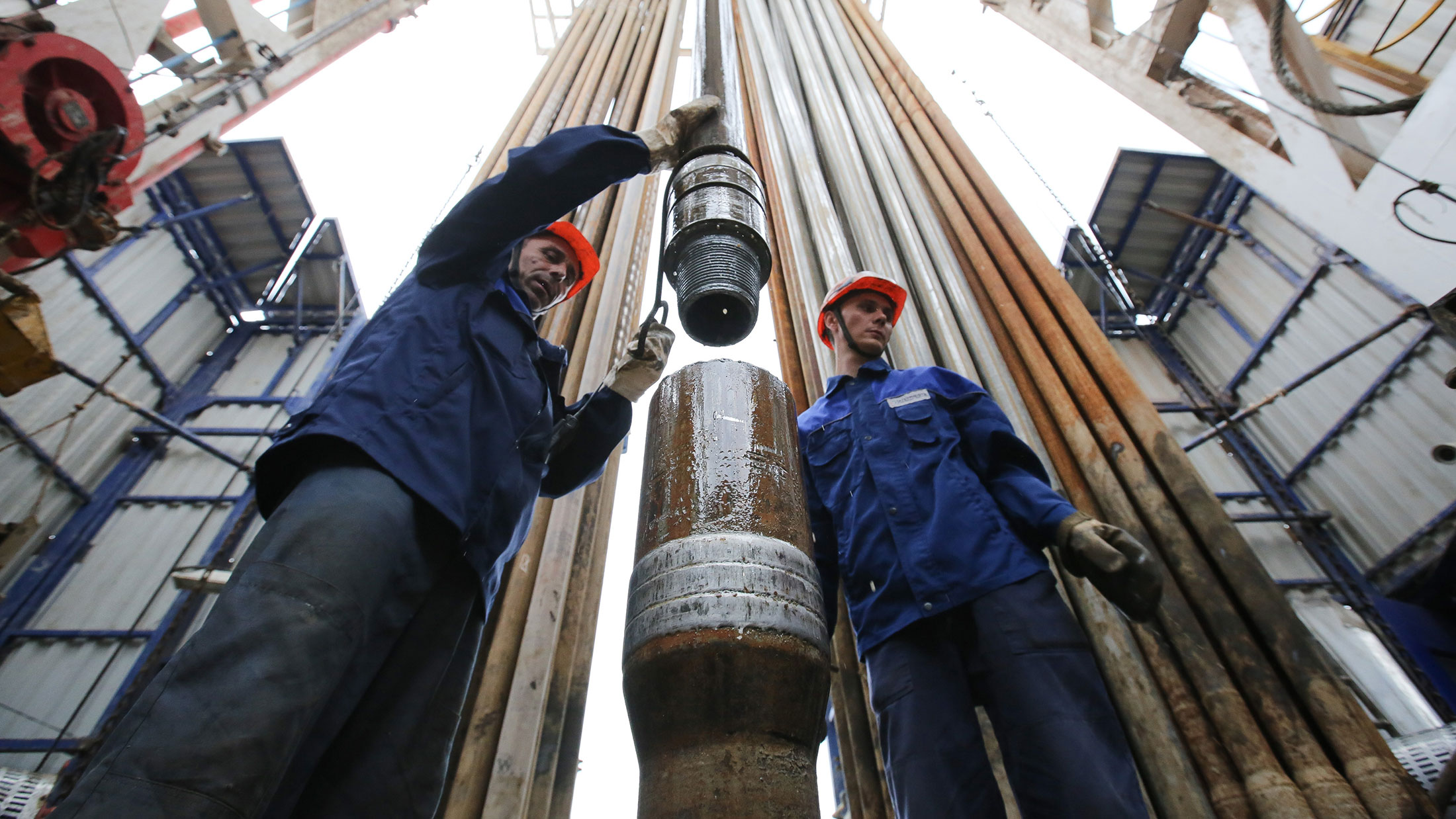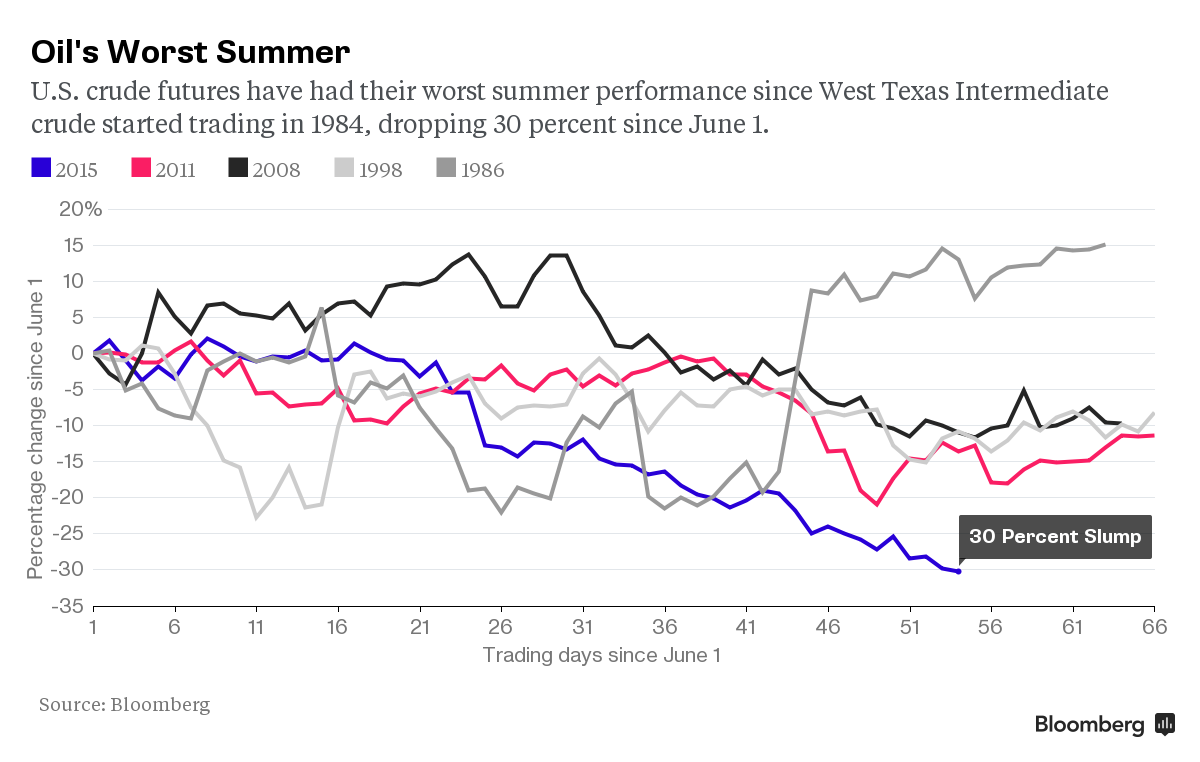U.S. crude futures have lost 30 percent since the start of June, set for the biggest drop since the West Texas Intermediate crude contract started trading in 1983. That beats the summer plunges during the global financial crisis of 2008, the Asian economic slump in 1998 and the global supply glut of 1986.
It even surpasses the decline of 2011, when prices fell as much as 21 percent over the summer as the U.S. and other large oil-importing nations released 60 million barrels of oil from emergency stockpiles to make up for the disruption of Libyan exports during the uprising against Muammar Qaddafi.
WTI, the U.S. benchmark, fell to a six-year low of $41.35 a barrel Friday. It may slide further, according to Citigroup Inc.
"Summer is when refineries are all running hard, so actual demand for crude is as good as it gets," Seth Kleinman, London-based head of energy strategy at Citigroup Inc., said by e-mail.
OPEC's biggest members are pumping near record levels to defend their market share and U.S. production is withstanding the collapse in prices and drilling. The oil market is still clearly oversupplied and "it will get more so as refiners go into maintenance," Kleinman said.
Oil demand usually climbs in the summer as U.S. vacation driving boosts purchases of gasoline and Middle Eastern nations turn up air-conditioning.
Crude has sunk this year even as U.S. gasoline demand expanded, stimulated by a growing economy and low prices. Total gasoline supplied to the U.S. market rose to an eight-year high of 9.7 million barrels a day last month, according to U.S. Department of Energy data.
Crude could fall to $10 a barrel as the Organization of Petroleum Exporting Countries engages in a "price war'' with rival producers, testing who will cut output first, Gary Shilling, president of A. Gary Shilling Co., said in an interview on Bloomberg Television on Friday.
"OPEC is basically saying we're not going to cut production, we're going to see who can stand lower prices longest,'' Shilling said. "Oil is headed for $10 to $20 a barrel.''







on oil I discovered that fracking has revealed an entirely unexpected surprise.
Beneath the 'mother' salt that is supposed to be the bedrock cover, the drillers punched thru and didnot find the sea floor or anything like it; they found another pure sandstone layer.
The implication of that is enormous. This sandstone may well have another layer of cap salt under it.
Aside from the expected oil, this means that successive layers of wet and dry have besieged the Earth in ancient times.